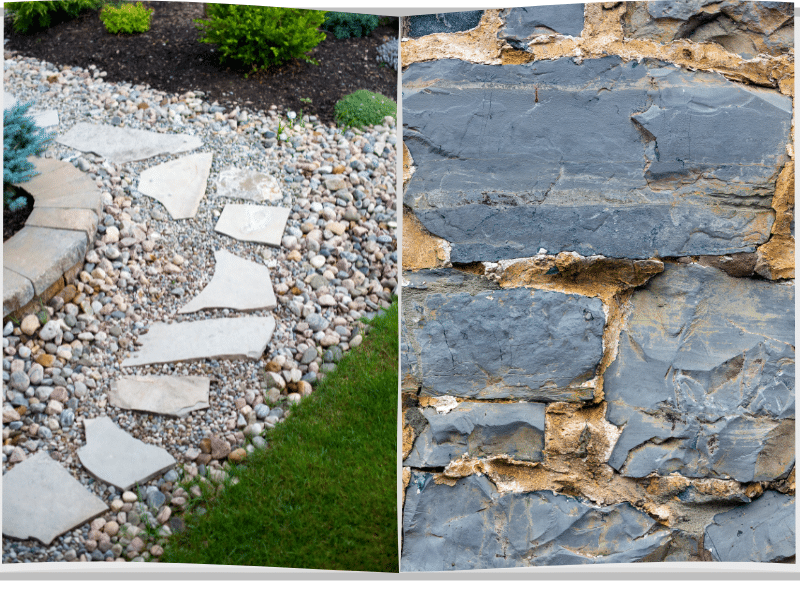A comprehensive guide to Bluestone and Flagstone
Bluestone and Flagstone are both large and flat natural stones commonly used in home designs. They are used in patios, driveways, walkways, and pool decks. Bluestone and flagstone are both versatile and durable stones making them a great choice for various landscaping and design applications. However, when you have to choose between the two for your project, you should consider the differences that make each of them unique.
About flagstone
Flagstone is a type of flat sedimentary stone that is split into thin layers, which allows it to be used in different applications. It usually is a sandstone containing feldspar and quartz that are cemented together with silica, iron oxide, or calcium.
Flagstone has been used for centuries in construction and landscaping. The irregularly shaped stone pieces are perfect for creating outdoor flooring, pathways, and patios. The natural variations in texture and color give each piece a unique appearance. Moreover, flagstone is weather-resistant, durable, and slip-resistant, which makes it a great choice for use in outdoor applications.
About bluestone
Bluestone is a type of flagstone and is categorized as a sedimentary rock formed by water bodies. It ranges in color from deep blue, blue-green, and earthy brown, to light grey. It has a fine, granular texture, which makes it slip-resistant and good for use in areas exposed to moisture such as around pools.
Bluestone slabs come in several shapes and sizes and may be cut in uniform sizes such as rectangles, squares, or even irregular shapes for a more natural look.
Flagstone Vs. bluestone
While both flagstone and bluestone are very popular in landscaping and other design applications, there are some clear differences that can help you choose between the two:
Appearance
Bluestone has a rich blue or gray color, which stands out in any outdoor setting. On the other hand, flagstone has more neutral shades that can blend with the surroundings beautifully. So, the choice depends on whether you want your driveways, walkways, patios, or other elements to stand out or blend in.
Moreover, bluestone is Very flat and has a rough texture. If you want to create a classic look, bluestone is the way to go. Flagstone has a more earthy look and you get a wider variety of colors and textures. So, keep that in mind when making a choice.
Strength and durability
Bluestone is believed to be stronger than flagstone. It is a naturally dense stone and is better able to withstand harsh weather conditions compared to flagstone. While flagstone may not be as sturdy as bluestone, its thick variants are weather-resistant and a good choice for outdoor applications.
Maintenance
Bluestone is a more porous stone and, hence, needs more maintenance. It may get stained easily, so regular cleaning is vital to prevent stubborn buildup of dirt and stains. Flagstone is easier to maintain compared to bluestone due to its low porosity.
Other features
Bluestone has a dense texture and is naturally slip-resistant. However, it can get quite hot in intense summer heat, so if you use it for your pool surround, you may get hot feet. Flagstone is slip-resistant when in rough form.
Bluestone is expensive and also the most durable. Flagstone is more affordable and needs the least maintenance. For this reason, flagstone is a more popular choice with homeowners.
If you have to decide between flagstone and bluestone for your project, speak to our experts now. Our team will help you make a choice based on your project requirements and budget.

